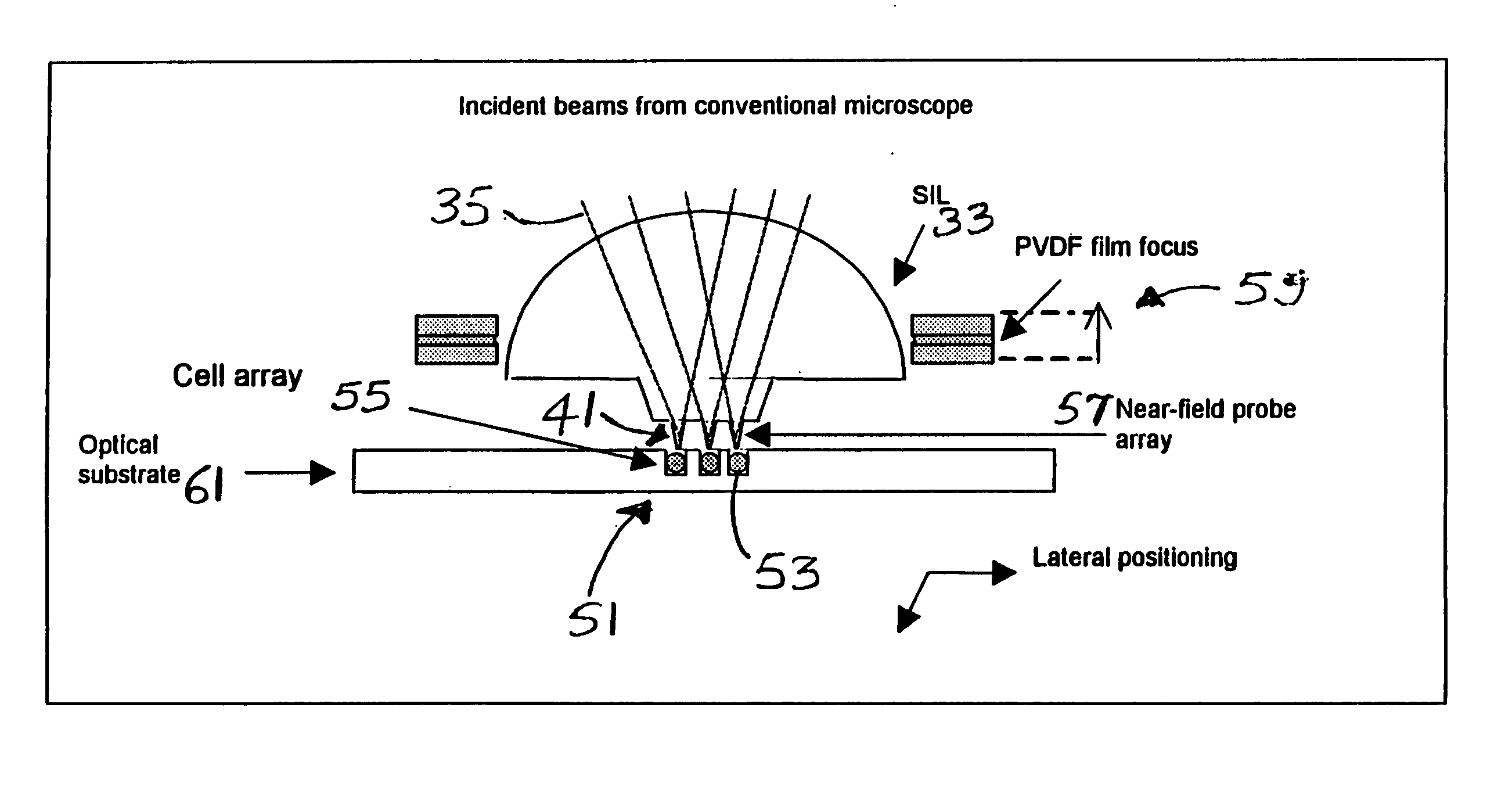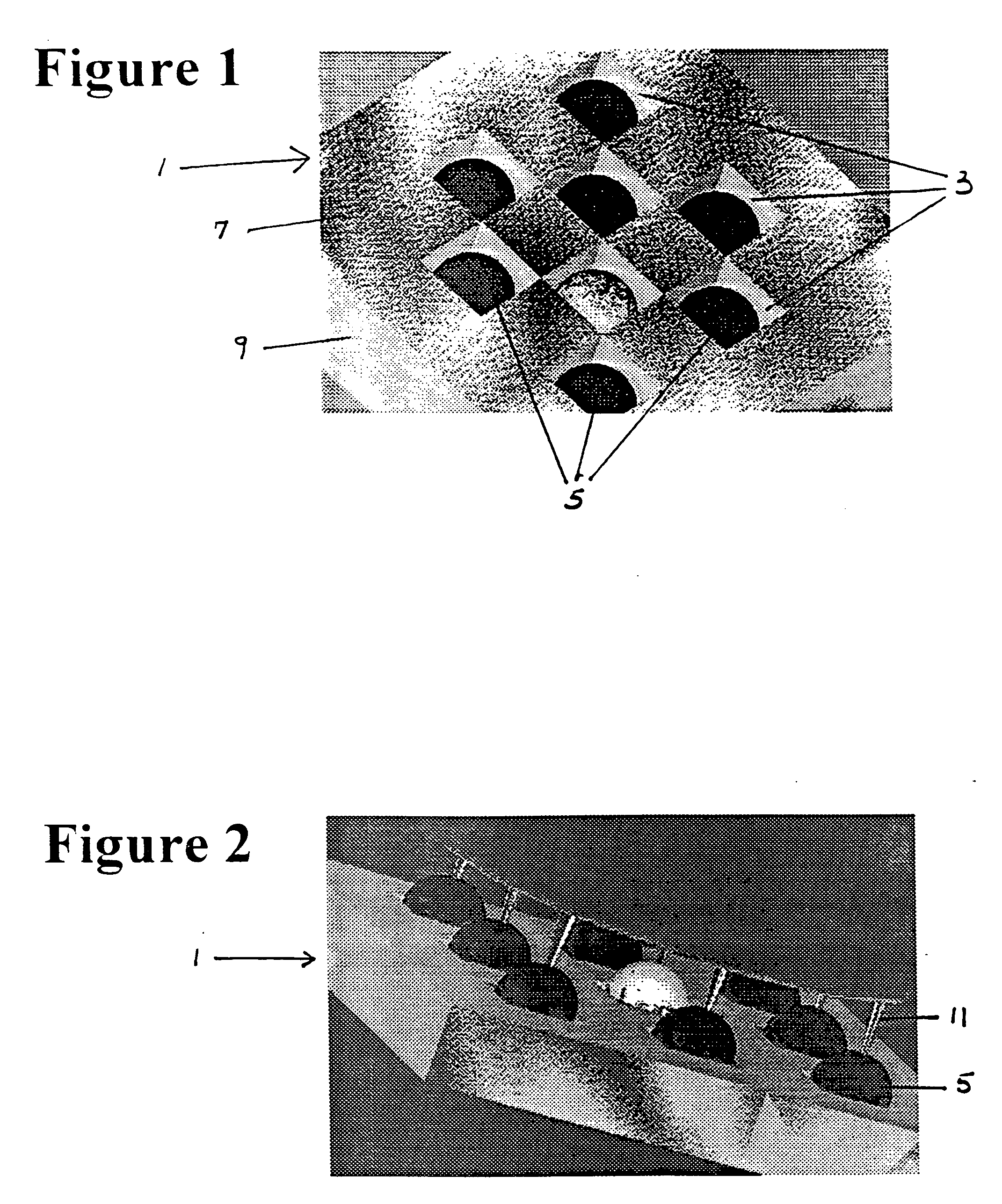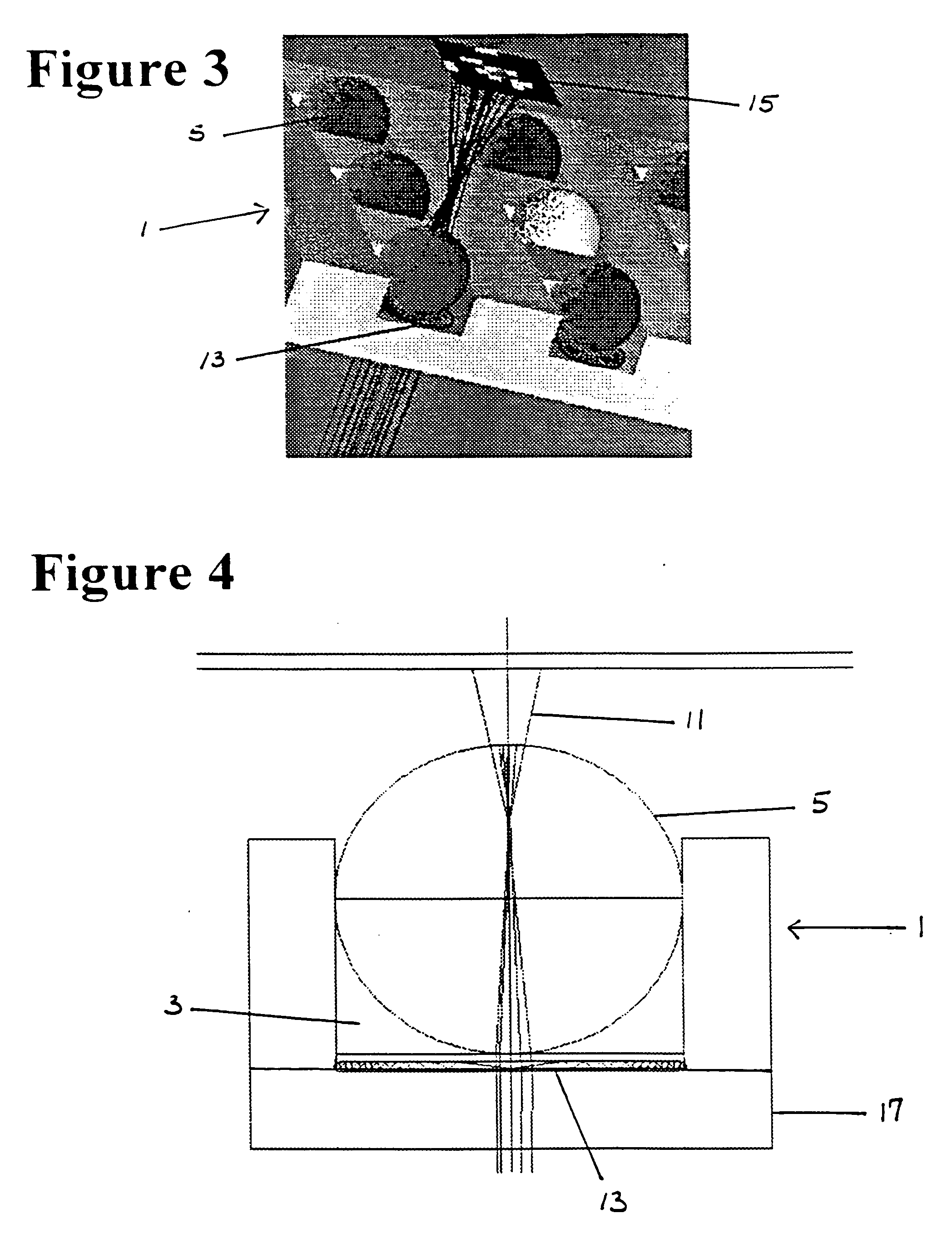Cell tray
a cell tray and cell technology, applied in laboratory glassware, fluorescence/phosphorescence, optical radiation measurement, etc., can solve the problem of cell destruction by electron microscope, and achieve the effect of large-scale production
- Summary
- Abstract
- Description
- Claims
- Application Information
AI Technical Summary
Benefits of technology
Problems solved by technology
Method used
Image
Examples
Embodiment Construction
[0030] The present invention provides a method of containing an ordered array of cells 1 in precise locations for use in parallel analysis and processing of cells 5 simultaneously.
[0031] As shown in FIG. 1, each cell cubicle or silo 3, in the square cell array 1, is located equidistant from its nearest neighbors in an orthogonal direction.
[0032] The cell tray 1 is fabricated using micro-machining techniques. A layer of chrome is deposited onto the cell carrier substrate 9. A layer of photoresist 7 is spin coated over the chrome. The material for the cell carrier substrate 9 includes, but is not limited to, fused silica (quartz), soda-lime glass, silicon, germanium, sapphire, and plastic. Other base substrates are used depending on the desired optimal transmission properties in various parts of the electromagnetic spectrum.
[0033] A lithographic mask is designed on computer and directly written on the photoresist with a laser scanning microscope. Alternatively a two-axis Ronchi rul...
PUM
 Login to View More
Login to View More Abstract
Description
Claims
Application Information
 Login to View More
Login to View More - R&D
- Intellectual Property
- Life Sciences
- Materials
- Tech Scout
- Unparalleled Data Quality
- Higher Quality Content
- 60% Fewer Hallucinations
Browse by: Latest US Patents, China's latest patents, Technical Efficacy Thesaurus, Application Domain, Technology Topic, Popular Technical Reports.
© 2025 PatSnap. All rights reserved.Legal|Privacy policy|Modern Slavery Act Transparency Statement|Sitemap|About US| Contact US: help@patsnap.com



